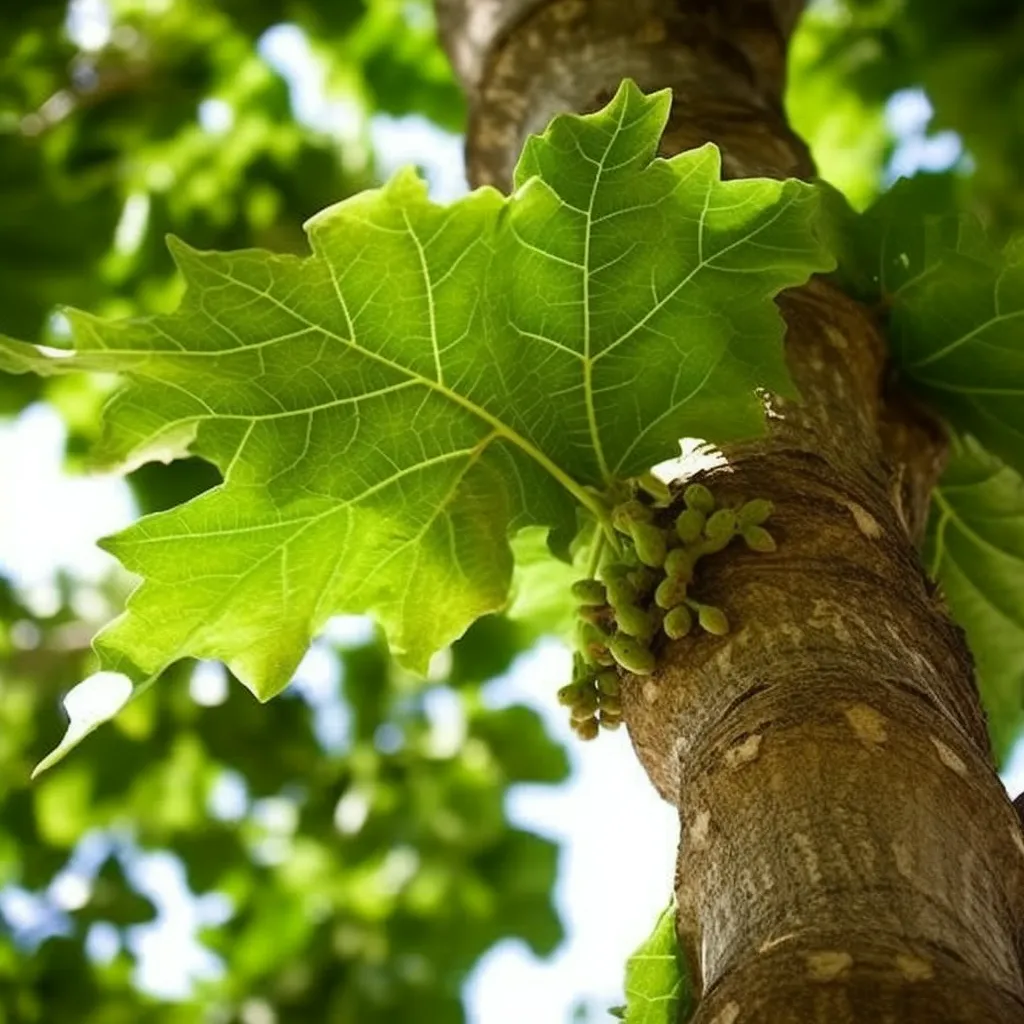Story of Day :
Contents
The Sycamore Plant: A Complete Guide and Care Tips
Gardening enthusiasts always seek out plants that are easy to care for, visually appealing, and can adapt to different weather conditions.
One such plant that has been gaining popularity among gardeners lately is the sycamore plant.
Introduction
Sycamores are deciduous trees that belong to the Platanus family.
Native to North America, Europe, and Asia, sycamores have a unique look with their mottled bark which peels off in patches as they mature.
They also produce large maple-like leaves and bear fruit in the form of round balls covered with spikes.
Planting

- Sycamores prefer well-drained soil with plenty of organic matter.
- Find a location where your tree will receive full sunlight or partial shade throughout the day.
- Dig a hole twice as wide as the root ball but not deeper than it is tall.
- Remove any burlap or wrapping from around the root ball before planting it in the hole at ground level.
- Add compost or aged manure around the base of your tree to enrich its soil for optimal growth.
Care Tips
- Watering: Sycamores require regular watering during their initial years of growth until they establish themselves fully into their environment.
Afterward, water them only when necessary (when there’s no rainfall).
- Fertilizing: Younger sycamores may benefit from annual fertilization while older ones don’t necessarily need it unless there’s an obvious nutrient deficiency present (yellowing leaves etc.).
It’s best to use a slow-release fertilizer that will gradually feed your tree as it grows.
- Pruning: Prune away any dead or damaged branches whenever necessary.
It’s also wise to remove any crossing or rubbing branches as they can cause damage to your tree.
Late winter and spring are the best times of year for pruning.
- Pests and diseases: Sycamores are susceptible to certain pests like mites, aphids, and scales which can be controlled with insecticidal soap sprays or neem oil.
They may also suffer from some fungal diseases like anthracnose which causes leaf spots and twig blight.
Sycamores in Landscaping

Sycamore trees have been a popular choice for landscaping because of their visually appealing features such as their striking bark pattern, large leaves that turn yellow in autumn, and colorful fruit balls that hang from its branches throughout winter.
They also provide plenty of shade during hotter months making them great for patios or gardens where one wants shelter from the sun.
The Benefits of Sycamores
- Sycamore trees serve as natural air purifiers by absorbing pollutants from the atmosphere such as carbon dioxide, sulfur dioxide, nitrogen oxides etc., reducing overall pollution levels around them.
- Their far-reaching root systems help prevent soil erosion on hillsides near waterways reducing sediment runoff into nearby streams which improves water quality by maintaining proper ecological balance in aquatic ecosystems.
- Their large canopy creates a welcoming habitat for birds and other wildlife species providing shelter for them all year round while creating an aesthetically pleasing environment ideal for nature enthusiasts who enjoy bird watching etc.
In Conclusion

In summary, sycamore plants are a great addition to any garden, providing a host of benefits ranging from their appealing aesthetics to their significant ecological importance.
With proper care and maintenance, they can flourish throughout the year while enhancing the beauty of your outdoor space.